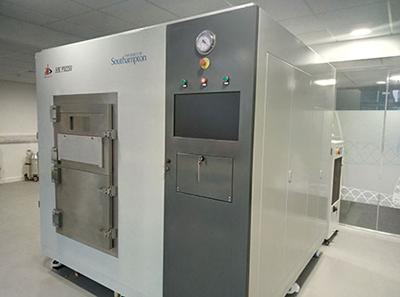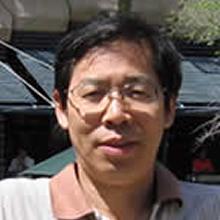Next generation additive manufacturing using novel 3D printing (MMAM)

Key details of this case study:
Summary: Our scientists are conducting novel research to develop a multiple-materials additive manufacturing technique which could produce functional design materials with the potential for a wide range of applications.
Status: Ongoing
Key staff: Dr Nong Gao, Professor Philippa Reed, Professor Shoufeng Yang, Dr Richard Boardman , Professor Atul Bhaskar.
Explore this case study:
The challenge
Although current additive manufacturing (AM) or 3D printing technologies offer new design possibilities to make sophisticated engineering parts for a wide range of applications, most of the research to date has been focused on processing a single material system.
Multiple materials additive manufacturing (MMAM) technology is attracting huge interest from a wide range of industrial sectors due to its ability to make multiple components in a single shot compared to conventional manufacturing methods. This has the potential to dramatically reduce supply chain length and materials wastage, and eliminate secondary operations.
Our innovative MMAM technology could potentially be exploited for manufacturing multiple material components in industrial sectors such as oil and gas, aerospace, marine, nuclear and automotive.
What we did
Recently awarded EPSRC grants (a £3m capital grant and an £0.8m novel instrumentation grant) have enabled our researchers to design and fabricate a novel new MMAM system at the University of Southampton by employing the next generation of additive manufacturing technology.
This new MMAM equipment includes two laser systems and a novel multiple materials recoating system. The two lasers can be operated independently (as a standalone SLS or SLM AM machine) or simultaneously (for multiple materials).
The multiple scanning mechanism means the equipment is capable of carrying out many scanning tasks, including group direction steering scanning, chessboard scanning, tape scanning and rotational scanning. This has enabled us to print a combination of different metallic materials in 3D, including stainless steel, Ti alloys, inconel, tool steels, CoCr alloys, polymers, ceramics, and other designed alloys.
Our impact
Using this new MMAM equipment, the University’s Materials Research Group will be able to carry out advanced research in collaboration with colleagues from the Computational Engineering Design Group and the Optoelectronics Research Centre (ORC), to manufacture a combination of different MMAM materials, and investigate their microstructure, mechanical properties and fatigue behaviour.
This novel research is set to open up a completely new manufacturing regime in which products can be designed with far fewer constraints than if they were manufactured from a single material, and offers a revolutionary approach for manufacturing ‘designed materials’ with properties and functions not currently in existence.
The outcome of our project will lead to a breakthrough in next generation additive manufacturing technology. The application of MMAM processes is expected to create many new future technological opportunities.
The facilities we used
We used the following facilities within the University - Multiple materials additive manufacturing (MMAM) system.
Find out more about the Engineering and Environment Faculty's many world class facilities.
Partners we worked with
This research is an interdisciplinary collaboration between Engineering and the University's Optoelectronics Research Centre.
The project is also a part collaboration with Lloyds Register and TWI.
Related staff member
Related Staff Member
Related staff member
Related Staff Member
Related Staff Member
The following PhD students also play a key role in this research project:
- Dr Xiao Zhao
- Shahir Mohd Yusuf
- Marie-Salome Duval-Chaneac
- Mr Kevin Smith - Production Facilities Manager
Other University of Southampton sites
You might also be interested in
Engineering Materials Research Group
Discover more about our related research group, dedicated to developing understanding of materials that affect the performance of engineering systems.
Computational Engineering Research Group
Learn about this related research group, a centre of excellence for multidisciplinary engineering simulation and design which combines a range of analytical, computational and experimental techniques.
Other Manufacturing and Materials case studies
Learn more about the research we are undertaking in these areas.
Postgraduate Opportunities
Explore our postgraduate research degrees.
Media Enquiries
Make a media enquiry about this case study




